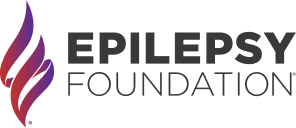What is Vagus Nerve Stimulation?
Dr. Koubeissi Talks about VNS Therapy
Epilepsy News From: Tuesday, February 24, 2015
VNS Therapy, or vagus nerve stimulation, is a way of controlling seizures in people who do not respond to medications and may not respond to surgery.
The vagus nerve sends information from your neck, chest, and stomach to the brain, and back from the brain to these regions. Important functions of the vagus nerve include controlling breathing and speech, regulating heartbeats, and regulating stomach movements during digestion.
In the 19th century, scientists realized that seizures may stop by activating the vagus nerve when pressure was applied to the carotid artery in the neck. Researchers later found that electrical stimulation of the vagus nerve can decrease seizures in animals, and clinical trials were done in humans. In 1997, the U.S. Food and Drug Administration (FDA) approved vagus nerve stimulation as a therapeutic intervention for intractable focal or partial epilepsy in people 12 years of age and over.
What is VNS Therapy?
VNS Therapy consists of a device placed under the skin near the collarbone in the left side of the chest. An electrode attached to the generator is then connected to the vagus nerve in the left side of the neck.
Preprogrammed stimulation can be delivered from the generator in the chest to the vagus nerve. Settings can be adjusted by a nurse and doctor trained in the use of VNS Therapy. A magnet can also be used to trigger bursts of stimulation when a seizure happens.
How well does VNS Therapy work?
The stimulation doesn’t work right away, but after a few months of therapy, about 25 to 30% of people may see that seizures decrease by half or more. Usually seizure control improves over time, with up to about 45% of people having seizures decrease at least by half after 1 to 2 years of therapy.
Complete seizure freedom by VNS happens in only small numbers of people. And in some people, it doesn’t work at all.
VNS is not considered a substitute for seizure medications. People continue to take seizure medications while using VNS. However, if the VNS works, some people can lower the number or dose of medications and lessen side effects.
What are common side effects of VNS?
Side effects of VNS are usually mild, including hoarseness and coughing, tingling, and shortness of breath. These usually occur when a person is getting used to the stimulation.
Research has shown that these side effects may occur in up to 29% of people in the first year to no more than 3% in the third year of VNS use.
Tell me more about VNS
- More than 60,000 individuals have implanted VNS devices worldwide.
- The VNS does not interact with medications.
- There is no evidence that the VNS affects fertility or causes harm to a developing baby during pregnancy.
- The VNS has a magnet that you can wear with a wrist strap like a watch. Swiping the magnet over the device when an aura (warning sign) occurs can activate the device and may stop a seizure in some people.
- VNS is also approved by the FDA for depression that does not respond to other treatments.
Authored by
Mohamad Koubeissi MD
Reviewed Date
Tuesday, February 24, 2015
